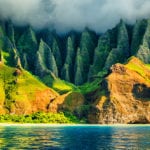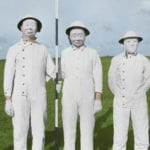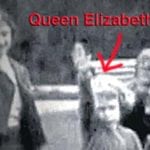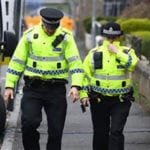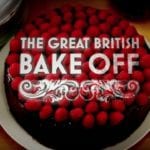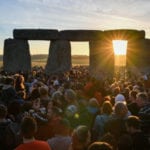 Weird Stuff
Weird Stuff  Weird Stuff
Weird Stuff  Our World
Our World 10 Ways Your Christmas Tree Is More Lit Than You Think
 Movies and TV
Movies and TV The 10 Coolest Stars to Set Sail on The Love Boat
 History
History 10 Things You Didn’t Know About the American National Anthem
 Technology
Technology Top 10 Everyday Tech Buzzwords That Hide a Darker Past
 Humans
Humans 10 Everyday Human Behaviors That Are Actually Survival Instincts
 Animals
Animals 10 Animals That Humiliated and Harmed Historical Leaders
 History
History 10 Most Influential Protests in Modern History
 Creepy
Creepy 10 More Representations of Death from Myth, Legend, and Folktale
 Technology
Technology 10 Scientific Breakthroughs of 2025 That’ll Change Everything
 Weird Stuff
Weird Stuff Ten Bizarre Facts About The Doge Meme
 Our World
Our World 10 Ways Your Christmas Tree Is More Lit Than You Think
 Movies and TV
Movies and TV The 10 Coolest Stars to Set Sail on The Love Boat
Who's Behind Listverse?

Jamie Frater
Head Editor
Jamie founded Listverse due to an insatiable desire to share fascinating, obscure, and bizarre facts. He has been a guest speaker on numerous national radio and television stations and is a five time published author.
More About Us History
History 10 Things You Didn’t Know About the American National Anthem
 Technology
Technology Top 10 Everyday Tech Buzzwords That Hide a Darker Past
 Humans
Humans 10 Everyday Human Behaviors That Are Actually Survival Instincts
 Animals
Animals 10 Animals That Humiliated and Harmed Historical Leaders
 History
History 10 Most Influential Protests in Modern History
 Creepy
Creepy 10 More Representations of Death from Myth, Legend, and Folktale
 Technology
Technology 10 Scientific Breakthroughs of 2025 That’ll Change Everything
Top 10 Amazing Islands That Are Remnants Of The British Empire
The British Empire was big. Very big. Starting with a few colonies in the time of Queen Elizabeth I, it grew steadily through the 17th and 18th centuries. It suffered a setback in 1776 when some North American colonies decided that they preferred looking after themselves. But it kept on growing. By 1922, the British Empire covered over 20 percent of the land surface of the planet and made up a quarter of the world’s population.
Canada, Australia, New Zealand, and Ireland all effectively became independent between World War I and World War II. This trend accelerated after World War II, with India and many African and Asian countries gaining independence. By the end of the 1960s, there was very little left of the empire.
Some fragments do remain, though. These have been renamed “British Overseas Territories.” The name change got rid of the politically difficult words “empire” and “colony.” In total (excluding Antarctica), these territories cover just 21,000 square kilometers (8,000 mi2) and have a population of roughly 250,000 people. Quite a change in less than 100 years.
Most of the overseas territories are islands, and many of them have amazing stories to tell.
10 Tristan Da Cuhna
A Place To Get Away From It All
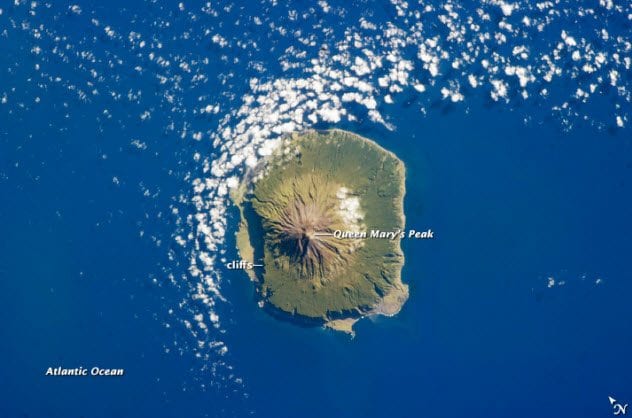
This volcanic island has a very good claim to being the most remote inhabited place in the world. It is located in the southern Atlantic Ocean, and a journey of 1,900 kilometers (1,200 mi) is required to reach its nearest inhabited neighbor. This is Saint Helena, which is tiny and remote itself.
To get to a continent, you can travel 2,400 kilometers (1,500 mi) east to South Africa or 3,400 kilometers (2,100 mi) west to South America. There is no airport, and supply boats only arrive about once a month. Around 300 people from 80 families call Tristan da Cuhna home.
Satellite pictures show an almost circular island dominated by a volcanic cone. The views look eerily like they have been created by CGI for a computer game. The volcano is active. An eruption in 1961 caused the whole population to be evacuated to Britain, and two years passed before they could return.
So what do 300 people living in the middle of nowhere do? Well, mainly sheep and cattle farming, potato growing, and fishing. The island also gets a chunk of its income from specially printed stamps, which are popular with collectors.
Tristan da Cuhna’s society is organized in an almost utopian way. All the land is owned communally, with each household allocated a plot of land to grow potatoes. Families have their own livestock, but animal numbers are controlled to prevent the dominance of any one family.
If this lifestyle appeals, you have a problem. Outsiders (the other seven billion of us) are not allowed to settle or buy land on the island—but you can visit.
9 Diego Garcia
Evictions And The Military

Several islands on this list could be described as tropical paradises, and some of the inhabitants seem to have idyllic lifestyles. Diego Garcia is a little bit different. Tropical—yes. Paradise—no. The island is home to a huge US–UK military base, with runways, fuel tanks, and hangers as the most visible features.
Diego Garcia is in the middle of the Indian Ocean. It is just south of the equator, 3,500 kilometers (2,200 mi) east of Africa and 1,800 kilometers (1,100 mi) south of India. It is part of a group of islands called the Chagos Archipelago and is a low-lying atoll.
In 1965, Mauritius had become a self-governing colony of Britain, well on its way to independence. Britain paid £3 million to Mauritius to buy the Chagos islands. The islands then became known as the “British Indian Ocean Territory.” The following year, the United States agreed to lease Diego Garcia for the next 50 years. There was no payment. Instead, the UK got a discount of $14 million on the Polaris missiles that it was about to buy.
About 1,000 people, known as Chagossians, lived on Diego Garcia. Between 1968 and 1971, they were “encouraged” to leave by the UK government. This encouragement included not allowing people who had left the island to return and restricting the supplies of food and medicine. The last few inhabitants were removed by force. It was not the UK’s finest hour.
The US military then moved in to create an “unsinkable aircraft carrier.” There are two 3,700-meter (12,000 ft) runways, a huge fuel storage area, and anchorages for naval ships in the lagoon. The base is currently known as Camp Thunder Cove and has been involved in many military operations. There are also allegations that Diego Garcia has been used by the CIA for illegal “black ops.”
The Chagossians have been fighting a long legal battle to be allowed to return to their home island. However, at the end of 2016, the US extended its lease by another 20 years. So any return for those who were evicted looks unlikely before 2036.
8 Pitcairn Island
Mutineers And Votes For Women
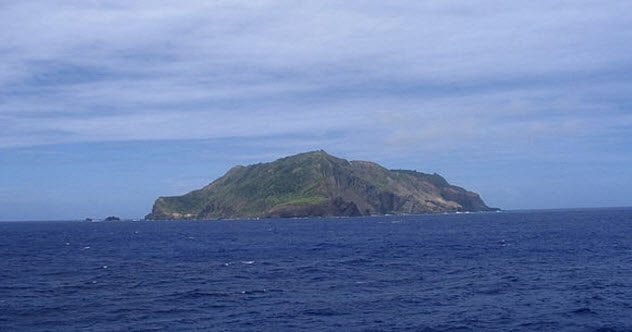
The story of the mutiny on HMS Bounty has been told many times. The most recent film version was in 1984 and starred Mel Gibson as Fletcher Christian. In 1789, the Bounty was on a voyage to the West Indies with a cargo of breadfruit plants from Tahiti. First Mate Christian led a mutiny and cast the ship’s captain, William Bligh, and 18 of the crew adrift in a longboat.
The mutineers returned to Tahiti, where most of them opted to stay. However, Fletcher Christian and eight others set out to find a hiding place. They knew that the Royal Navy would eventually come looking for them. Also aboard were 18 Polynesians, six men and 12 women. On January 15, 1790, the Bounty arrived at Pitcairn Island. They landed, stripped the ship of anything useful, including the masts, and then burned the hull.
The island itself is about 2,200 kilometers (1,350 mi) from Tahiti in the South Pacific Ocean. It is volcanic and covers just a few square miles. There is no airport or harbor. Supply ships have to unload their cargo into small boats which come ashore at Bounty Bay.
By the time an American whaling ship stumbled on the settlement in 1808, only one mutineer, John Adams, was still alive. The Royal Navy did not arrive until 1814 and was greeted by Adams and Fletcher Christian’s son. He went by the impressive name of Thursday October Christian. In 1838, Pitcairn formally became a British colony and it was the first part of the British Empire to allow women to vote in elections.
The population has fluctuated over the years, sometimes peaking at several hundred. But currently, there is a crisis. In 2014, the population was just 56, with many of the younger residents choosing to move 5,500 kilometers (3,400 mi) to nearby New Zealand. If the trend continues, there will be no one living on Pitcairn by 2050. So there is a drive to attract new settlers.
7 Montserrat
Volcanic Rock
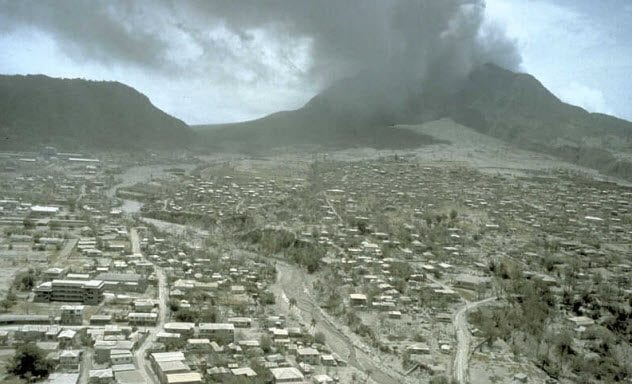
Like many of these tiny British territories, Montserrat is a volcanic island. Located in the Caribbean, it is covered in lush vegetation and shares the nickname of the “Emerald Isle” with Ireland.
Record producer George Martin of Beatles fame visited the island in the 1970s. He was so taken with the place that he set up a studio. Throughout the 1980s, a string of hit albums were produced at AIR Studios by artists such as Dire Straits, The Police, and the Rolling Stones. The creativity came to an end in 1989 when the studios closed after being severely damaged by Hurricane Hugo.
Six years later, the island’s volcano, which had sat quietly minding its own business for centuries, erupted. Within weeks, Plymouth, the capital, was buried in a thick layer of ash and large parts of the island had to be evacuated.
Volcanic activity has continued since, with more big eruptions in 2006, 2008, and 2010. At the moment, the island is split in half. The southern volcanic area is an exclusion zone visited only by volcanologists.
6 Saint Helena
Napoleon’s Final Prison
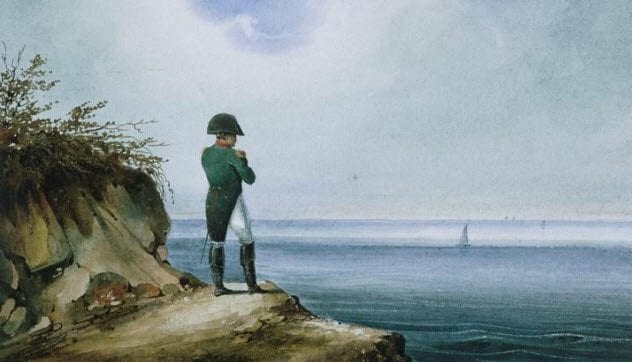
In 1814, 11 years of war in Europe came to an end. The loser, Napoleon Bonaparte, was exiled to the island of Elba in the Mediterranean Sea. Three hundred days later, Napoleon escaped, landed in France, raised an army, and marched into Belgium to confront the British and Prussian armies. They met at the Battle of Waterloo—and Napoleon lost again.
This time, his exile was on the island of Saint Helena in the middle of the Atlantic. Escape was never really a possibility, and Napoleon died on Saint Helena in 1821. Longwood House, the residence where he died, is now owned by the French government and operates as a museum.
About 4,500 people currently live on the island. They rely on a supply ship that visits every few weeks. Between 2012 and 2016, a new airport was built at a cost of over £200 million. The islanders were hoping for a big boost to tourism.
But somebody made a slip-up at the planning stage. No one noticed that wind conditions would make landing very difficult. So as of April 2017, no airline has been willing to commit to a regular service. The shiny new terminal building is very quiet.
5 Ascension Island
How To Make A Forest

Every time our satnavs stop us from getting lost, we should say a little thank you to Ascension Island. One of the four ground antennas that keep the whole GPS system working is located on the island. The residents of the International Space Station also rely on Ascension. NASA has an observatory there which tracks potentially dangerous debris in Earth’s orbit.
Set in the middle of the Atlantic about 800 kilometers (500 mi) south of the equator, Ascension Island operated as a Royal Navy base from 1815. At this time, the island had no trees and little vegetation of any kind.
From the 1850s, the navy began importing and planting trees. The policy was so successful that there was a forest on the island’s mountain less than 30 years later. The current population of about 800 mainly works at the various scientific and tracking bases or at the military airfield which is operated jointly by the UK and US.
4 South Georgia
A Place For Cool Dudes
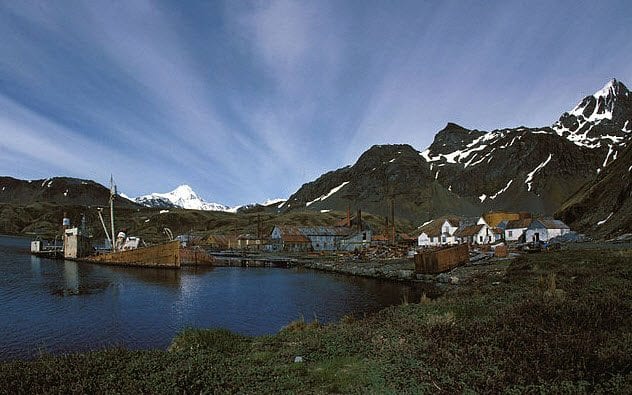
Many of these remnants of the British Empire have tropical climates. But to enjoy living on South Georgia, you have to like cool temperatures. It is in the South Atlantic Ocean, not far north of the Antarctic Circle. Even on the warmer northern coast, average summer temperatures peak at about 9 degrees Celsius (48 °F). In the winter months, temperatures rarely rise above freezing.
No one lives permanently on the island. The staff at a couple of scientific bases changes every few months, and during the summer, the museum at the old whaling station at Grytviken opens to cater to passengers from cruise ships. The grave of polar explorer Ernest Shackleton is also at the tiny settlement.
3 Bermuda
Shipwrecks And Shorts
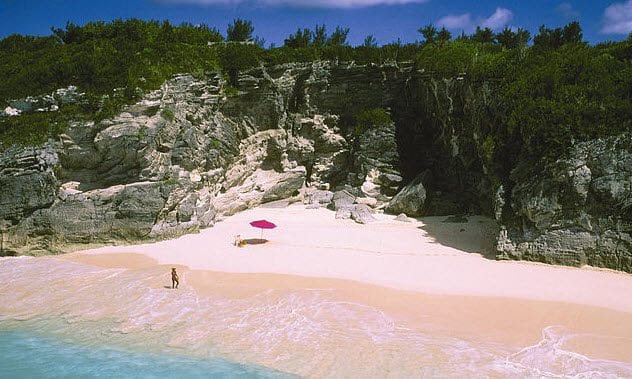
Located 1,000 kilometers (650 mi) off the east coast of the US, Bermuda was initially settled and run by the English Virginia Company. The company had established Jamestown, Virginia, a few years earlier.
The colonization was unplanned. A shipwreck in 1609 forced 150 people onto the island. A written account of the event, A True Reportory of the Wracke and Redemption of Sir Thomas Gates, is said to have given Shakespeare inspiration for his play The Tempest.
In 1684, Bermuda formally became an English colony. It operated as a stopover for vessels going between Britain and the colonies of North America. Then, after the American Revolutionary War, Bermuda became an important Royal Navy base. During the War of 1812, it was the starting point for attacks on Washington, DC, and Chesapeake Bay.
In modern times, Bermuda has made a very comfortable living from tourism and from its operations as an offshore tax haven. The men and women of the island also gave the world Bermuda’s great contribution to world fashion—Bermuda shorts. The island’s trademark outfit of formal shirt, jacket, and tie, combined with shorts and long socks, is a truly unique style statement.
2 Anguilla
Gentle Revolutions
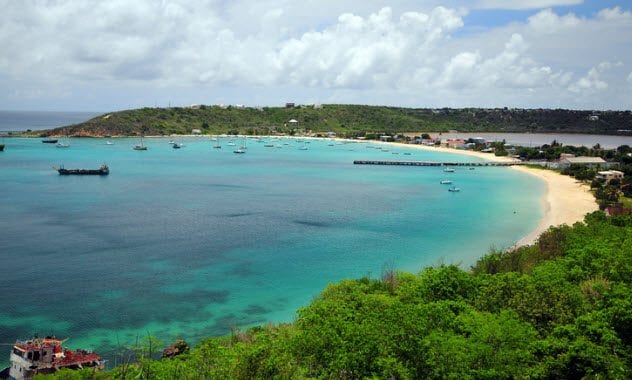
Disposing of an empire is not always easy. Anguilla is in the Caribbean. About 100 kilometers (60 mi) away were two more islands under British rule, Saint Kitts and Nevis. In 1967, someone at the British Foreign Office decided that making the three islands a single state would be a simple way to give another bit of the empire its independence. The most complicated part of the plan seemed to be the name of the new country—Saint Kitts-Nevis-Anguilla. This bright idea led to two revolutions.
As far as the Anguillans were concerned, they would be dominated by the other two islands—something they definitely did not want. In May 1967, the police force (from Saint Kitts) was evicted from the island. A provisional government was set up, and in July, 99.7 percent of the population voted to split from Saint Kitts and Nevis. A declaration of independence was read in public.
Two years of negotiations with the British followed but with no agreement on how the island should be run. So in 1969, a second vote was taken. This time, the portion wanting nothing to do with Saint Kitts and Nevis increased to 99.8 percent and the “Republic of Anguilla” was declared.
An envoy from Britain arrived to try to sort things out and was quickly kicked off the island. This resulted in the arrival of a contingent of British troops and 40 officers from London’s Metropolitan Police Force. Depending on your point of view, this was either an invasion or a way to peacefully restore order.
With no shots fired, the revolution was over. But the Anguillans got what they wanted. Saint Kitts and Nevis became an independent state while Anguilla remained under British administration. It now makes a comfortable living as a vacation destination and tax haven.
1 The Turks And Caicos Islands
The Next Province Of Canada?
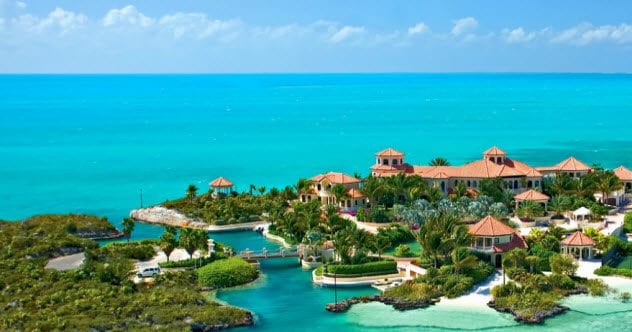
This group of islands, of which eight are inhabited, neatly fits the label “tropical Caribbean paradise.” Not surprisingly, tourism is the most important part of the islands’ economy. Hotels and cruise ports cater to about a million visitors each year. This is a ratio of approximately 20 visitors for each resident.
Many tourists come from Canada, and there has been a lot of talk about the islands becoming a Canadian province. The first proposal, which was from Canada, dates back to 1917. Then in 1974, the islands made a “serious offer” to join Canada. More discussion has followed over the last few years, and it is quite possible that Canada will eventually have a province with a much warmer climate.
Steve is an aging English geek who is fascinated by odd history. He’s put together some of his favorite stories at www.thequirkypast.com.

